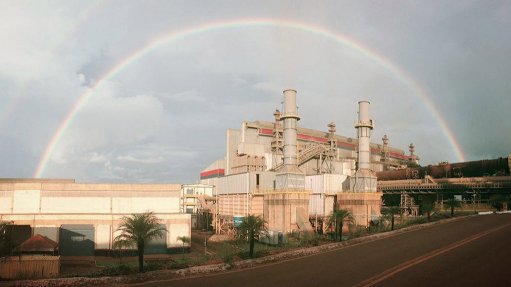
IMPROVED OUTPUTS Nickel production increased by 4% year-on-year to 10 900 t, following the successful ramp-up of the Barro Alto mine, in Brazil, to nameplate capacity in the third quarter
Diversified miner Anglo American achieved higher output for most of its products in the fourth quarter ended December 31, but copper production fell by 19% year-on-year.
The lower copper production, which decreased to 146 600 t, was mainly the result of lower grades and the impact of adverse weather and illegal industrial action by contractor unions at the group’s Los Bronces mine, in Chile.
Anglo American CEO Mark Cutifani said, however, that operational improvements across the portfolio delivered a 4% production increase on a copper-equivalent basis for the three months under review.
Copper-equivalent production has been normalised, taking into account the sale of the Norte, Kimberley, Niobium & Phosphates, Foxleigh and Callide operations, the fact that Snap Lake has been placed on care and maintenance and that the Drayton mine has been closed.
Nickel production, meanwhile, increased by 4% year-on-year to 10 900 t, following the successful ramp-up of the Barro Alto mine, in Brazil, to nameplate capacity in the third quarter.
Anglo’s De Beers subsidiary’s rough diamond production increased by 10% year-on-year to 7.8-million carats. Cutifani noted that De Beers’ continued production increases were a reflection of the improved trading conditions relative to those experienced during the fourth quarter of 2015.
He added that the production increase also reflected the ramp-up of production at the Gahcho Kué diamond mine, in Canada.
Export metallurgical coal production decreased by 2%, primarily as a result of the sale of the Foxleigh coal mine, in Australia, which was completed in August 2016.
“Excluding Foxleigh, production increased by 5% to 5.4-million tonnes, owing to the ramp-up at the Grosvenor coal mine, in Australia, and as a result of the productivity improvements at the Moranbah and Dawson coal mines, in Australia,” Cutifani stated.
He pointed out, however, that these had been partly offset by geological issues and a subsequent longwall move at the Grasstree coal mine, in Australia, during the fourth quarter.